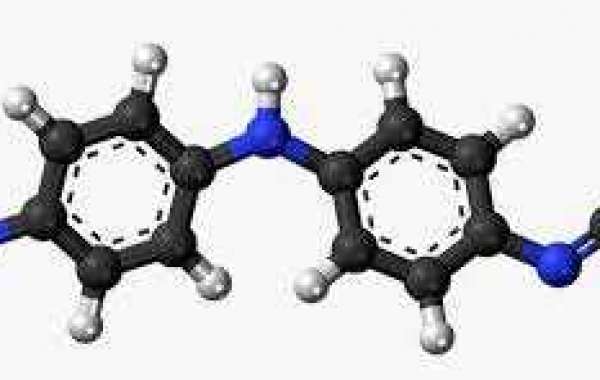The main purpose of such hormones as insulin and glucagon is to balance the sugar level in the blood so that it is does not reach either of the extreme levels. Sometimes, blood sugar in the blood may become extremely low. This may be caused by vigorous body activity, starvation, or other things. In such instances, the pancreas through the alpha cells releases glucagon. This hormone acts on the glycogen stored in the body, which is converted into glucose in the process identified as glycogenolysis. This glucose enters the blood stream, hence increasing the sugar level in the blood. Through this process, the blood sugar is restored to the normal level. However, there are cases when the blood sugar goes beyond the normal level hence there is the need of another hormone.
In other instances, the blood sugar may be extremely high. This may be caused by intake of foods with high level of sugar (carbohydrates). In other times, too much glycogen may be converted hence raising the sugar level to the extreme. In such scenarios, the pancreas through the beta cells releases the hormone insulin. The released insulin converts the excessive amount of glucose into glycogen through the process of glycogenesis. Insulin also aids the fat tissue and muscle to consume the excessive amount of sugar so that the blood sugar levels are reduced to normal. Overall, glucagon works towards increasing deficit blood sugar to normal while insulin eliminates the excess sugar in order to reach normal. When there is a problem with either of the hormones, a person will develop glucagon or insulin related diseases. One of these diseases is known as diabetes mellitus.
When there is a problem with the hormone insulin, a disease known as diabetes mellitus occurs. This disease is categorized into three types. They are type 1, type 2, and type 3. Type 1 Diabetes Mellitus occurs when the body is deficient of insulin. In such cases, the pancreas may have failed to produce any insulin completely. In other instances, it may be producing too little insulin to make an impact. People with such problems mainly regulate their blood sugar levels by artificially introducing insulin to their bodies. Unfortunately, this problem does not have an age limit. It occurs in both children and adults.
Type 2 Diabetes mellitus occurs when the body cells reject the insulin produced. In such cases, the body fails to use this insulin effectively while in other cases it may fail to use the insulin produced at all. Consequently, the body reacts as though there is no presence of insulin in the body. This problem is mainly found in adults.
Type 3 Diabetes Mellitus occurs in pregnant women. It is also referred to as gestational diabetes. In such cases, expectant women who had no previous diabetic cases indicate high levels of glucose in their blood. If it is not keenly monitored and handled, type 2 diabetes may result in the same. However, in many cases, glucose levels return to normal a while after the gestation period is over. Women suffering from this type of diabetes regulate their sugar levels through proper diets and drugs when necessary. It is relevant to note that diabetes causes other complications such as high blood pressure and heart-related diseases.
Overall, diabetes mellitus is a condition of high glucose levels in the blood due to problems related to the insulin production and activity in the body. There are other forms of diabetes mellitus that are caused by genetic defects (congenital diabetes) and the use of drugs (steroids).
The main purpose of such hormones as insulin and glucagon is to balance the sugar level in the blood so that it is does not reach either of the extreme levels. Sometimes, blood sugar in the blood may become extremely low. This may be caused by vigorous body activity, starvation, or other things. In such instances, the pancreas through the alpha cells releases glucagon. This hormone acts on the glycogen stored in the body, which is converted into glucose in the process identified as glycogenolysis. This glucose enters the blood stream, hence increasing the sugar level in the blood. Through this process, the blood sugar is restored to the normal level. However, there are cases when the blood sugar goes beyond the normal level hence there is the need of another hormone.
In other instances, the blood sugar may be extremely high. This may be caused by intake of foods with high level of sugar (carbohydrates). In other times, too much glycogen may be converted hence raising the sugar level to the extreme. In such scenarios, the pancreas through the beta cells releases the hormone insulin. The released insulin converts the excessive amount of glucose into glycogen through the process of glycogenesis. Insulin also aids the fat tissue and muscle to consume the excessive amount of sugar so that the blood sugar levels are reduced to normal. Overall, glucagon works towards increasing deficit blood sugar to normal while insulin eliminates the excess sugar in order to reach normal. When there is a problem with either of the hormones, a person will develop glucagon or insulin related diseases. One of these diseases is known as diabetes mellitus.
When there is a problem with the hormone insulin, a disease known as diabetes mellitus occurs. This disease is categorized into three types. They are type 1, type 2, and type 3. Type 1 Diabetes Mellitus occurs when the body is deficient of insulin. In such cases, the pancreas may have failed to produce any insulin completely. In other instances, it may be producing too little insulin to make an impact. People with such problems mainly regulate their blood sugar levels by artificially introducing insulin to their bodies. Unfortunately, this problem does not have an age limit. It occurs in both children and adults.
Type 2 Diabetes mellitus occurs when the body cells reject the insulin produced. In such cases, the body fails to use this insulin effectively while in other cases it may fail to use the insulin produced at all. Consequently, the body reacts as though there is no presence of insulin in the body. This problem is mainly found in adults.
Type 3 Diabetes Mellitus occurs in pregnant women. It is also referred to as gestational diabetes. In such cases, expectant women who had no previous diabetic cases indicate high levels of glucose in their blood. If it is not keenly monitored and handled, type 2 diabetes may result in the same. However, in many cases, glucose levels return to normal a while after the gestation period is over . Women suffering from this type of diabetes regulate their sugar levels through proper diets and drugs when necessary. It is relevant to note that diabetes causes other complications such as high blood pressure and heart-related diseases.
Overall, diabetes mellitus is a condition of high glucose levels in the blood due to problems related to the insulin production and activity in the body. There are other forms of diabetes mellitus that are caused by genetic defects (congenital diabetes) and the use of drugs (steroids).
The article was gather by Keri Johns. She works at https://exclusivethesis.com/reviews/







